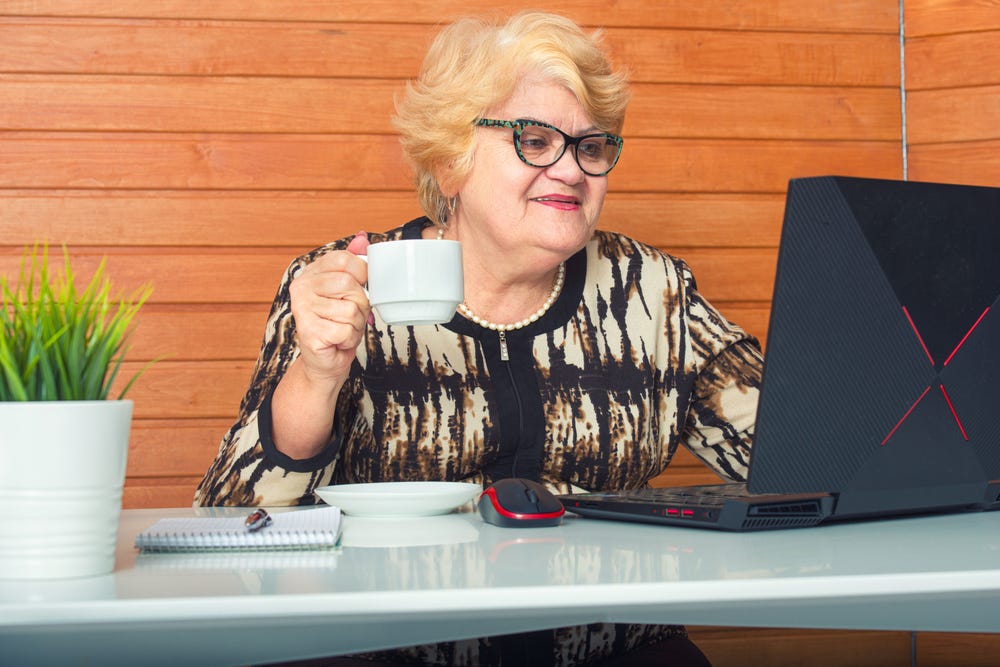Photographer: Diane Barth
I have a special tea kettle, given to me by my children and grandchildren. It’s apple green, cheery, and boils water quickly. And it’s starting to rust. On the inside.
I’ve spent a lot of time on the internet trying to find out if it’s safe to drink water from a rusted teakettle. My gut tells me that it’s a bad idea, and there are plenty of folks out there who agree with my intuition. But I don’t want to lose it, and there are plenty of other folks who say it’s fine.
Since I drink a lot of tea, the kettle gets a lot of use. And every time I pour boiling water into a cup with a tea bag and milk, I feel connected, loved, and loving. Maybe it’s silly to invest so much feeling in an inanimate object. I have plenty of moments of love every day. My almost four-year-old grandson has learned how to use FaceTime on his own, and he checks in regularly, sometimes several times a day. I love that.
But my tea kettle has taken on a special meaning. It’s not soft and comforting like a beloved childhood stuffy, but it has that kind of feeling for me. In psychotherapy-ese, it has become a transitional object, that is, something that represents a connection to a loved one, something that we hold or use to feel comforted, something that makes us feel safe.
I know not everyone reading this Substack shares the same political opinion, but I think we may all be sharing a sense of anxiety about the future. Even if you’re not worried, we all need soothing at times.
By the time we reach the Third Age, we have well-established patterns for giving and receiving comfort. A walk in nature for some of us, or along busy city streets for others, a cuddle with a beloved pet, a cup of tea and a good romance or detective book, a glass of wine with a friend – all tried and true ways of easing our anxieties and pains. All of the above work for me, but almost always with a cup of tea in hand – yep, even when I’m taking a walk, I like to have my carry cup full of hot tea.
So it’s not such a surprise that I feel connected to the pot that boils the water that makes that tea. And despite the fact that it’s not soft and is often too hot to handle (although my daughter-in-law gave me a matching hotpad for this exact reason), my bright green tea kettle has many of the qualities of a good stuffy. It represents not only my family’s love, but their understanding of me and who I am and what I need, which is the point of a transitional object.
The phrase “transitional object” was coined by the psychoanalyst and pediatrician D.W. Winnicott in 1951. He was referring to something, usually soft and cuddly, that allowed a child to begin to make the transition from total attachment to a parent to a more individuated self. We now understand that transitional objects are important because they allow children to maintain a crucial emotional connection as they are becoming more independent from the grownups in their lives.
In my years as a psychotherapist, I have seen that we all use transitional objects throughout life. A photograph, inherited jewelry, a gifted piece of art, furniture, china, or pottery, a letter or birthday card, even a plant that has some sort of tie to a loved one can bridge distance, time, and absence. We feel connected while we feel separate from that important person.
The thing that’s both puzzling and ultimately nice about this time in our lives is that while we still turn to these concrete representations of our connections for comfort, we can also manage without them. I am seeing this phenomenon in action as friends who are downsizing to smaller homes are culling through their belongings. I’m impressed with their ability to gift, sell, and donate items that have meaning but are not necessary to their lives. As one friend told me, “I have the real connections, and I have the memories. I don’t need a blankie anymore.”
I am not ready to downsize yet, and I think it will be hard for me when that time comes. I have many transitional objects, and I like them all. I am comforted by the knowledge that these friends are holding onto some treasured comfort items. But I also know that I, too, have the memories and the connections.
I have decided that I can put these ideas into practice with the apple green tea kettle. It won’t be such a comfort if I worry about what the rust is doing to my insides. A better solution will be to get myself a new kettle and use this one as a planter. Or maybe I’ll take what is, for me, a radical action and toss it out, since I don’t want to gift it and have someone else’s rusty insides on my conscience.
Then, if I need to connect, I can FaceTime my grandson while I drink my tea.
Photo credit: shutterstock id #1742579816 photographer Koltsov






Diane, before you toss that pretty green teakettle, consider having it repurposed into a kitchen lamp. I did that with an old copper teakettle and it’s my favorite “coming in the back door” light. If you don’t want to attempt it (You Tube), a lamp store could.
Nice column! My younger daughter recently gifted me with a new teakettle when my old one wore out. Guess what color it is? Apple green!